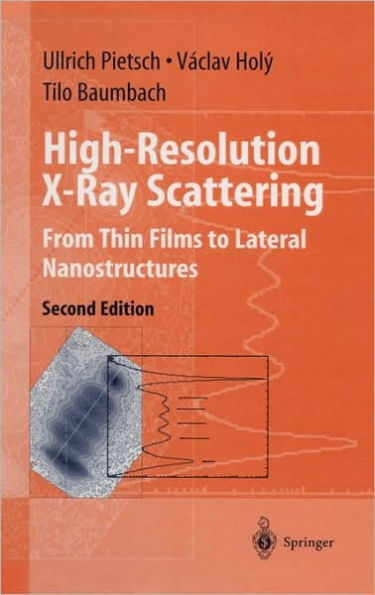High-Resolution X-Ray Scattering: From Thin Films to Lateral Nanostructures
During the last 20 years interest in high-resolution x-ray diffractometry and reflectivity has grown as a result of the development of the semiconductor industry and the increasing interest in material research of thin layers of magnetic, organic, and other materials. For example, optoelectronics requires a subsequent epitaxy of thin layers of different semiconductor materials. Here, the individuallayer thicknesses are scaled down to a few atomic layers in order to exploit quantum effects. For reasons of electronic and optical confinement, these thin layers are embedded within much thicker cladding layers or stacks of multilayers of slightly different chemical composition. It is evident that the interface quality of those quantum weHs is quite important for the function of devices. Thin metallic layers often show magnetic properties which do not ap pear for thick layers or in bulk material. The investigation of the mutual interaction of magnetic and non-magnetic layers leads to the discovery of colossal magnetoresistance, for example. This property is strongly related to the thickness and interface roughness of covered layers.
1101674564
High-Resolution X-Ray Scattering: From Thin Films to Lateral Nanostructures
During the last 20 years interest in high-resolution x-ray diffractometry and reflectivity has grown as a result of the development of the semiconductor industry and the increasing interest in material research of thin layers of magnetic, organic, and other materials. For example, optoelectronics requires a subsequent epitaxy of thin layers of different semiconductor materials. Here, the individuallayer thicknesses are scaled down to a few atomic layers in order to exploit quantum effects. For reasons of electronic and optical confinement, these thin layers are embedded within much thicker cladding layers or stacks of multilayers of slightly different chemical composition. It is evident that the interface quality of those quantum weHs is quite important for the function of devices. Thin metallic layers often show magnetic properties which do not ap pear for thick layers or in bulk material. The investigation of the mutual interaction of magnetic and non-magnetic layers leads to the discovery of colossal magnetoresistance, for example. This property is strongly related to the thickness and interface roughness of covered layers.
139.99
In Stock
5
1

High-Resolution X-Ray Scattering: From Thin Films to Lateral Nanostructures
408
High-Resolution X-Ray Scattering: From Thin Films to Lateral Nanostructures
408Hardcover(Second Edition 2004)
$139.99
139.99
In Stock

Product Details
| ISBN-13: | 9780387400921 |
|---|---|
| Publisher: | Springer New York |
| Publication date: | 08/27/2004 |
| Series: | Advanced Texts in Physics |
| Edition description: | Second Edition 2004 |
| Pages: | 408 |
| Product dimensions: | 6.10(w) x 9.25(h) x 0.04(d) |
From the B&N Reads Blog
